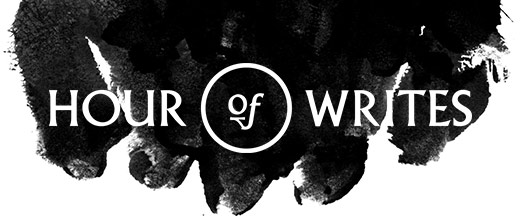Artist As Witness
Entry by: Alobear
16th June 2015
Artist As Witness
She doesn’t know where she goes when she draws. The sketch pad and pencils call to her and she sits down at her desk, taking up her tools. She smoothes the blank page with light fingers and registers the hard wood of the pencil in her hand. She sets charcoal to paper and her mind slips away, somewhere unknown. It happens every time. She has no control over the movements of her hands over the page, does not even consciously watch them. Maybe her eyes close, maybe her focus just drifts; she doesn’t know.
All she does know is that, some time later, she comes back to herself and looks down at the sketch pad to see a picture she has no memory of drawing. It will invariably be a night-time scene, a city street or a dark back alley. There are always people, lurking in the shadows or engaged in nefarious deeds or running from the crimes they have committed. Sometimes, victims bleed in the aftermath or scream as the attack begins. In other pictures, a shop window is smashed or a car broken into.
Violence pervades every image. It shouts from every charcoal line, telling a story of unremitting horror for the people who inhabit the city. She never recognises the place or the people, never knows from whence the images come. She can only answer the call to create them, bearing witness to unknown crimes. She does not know if they are real events, and does not want to know. She has no way of identifying their time or place, so could do nothing to prevent them, and has no desire to discover if they are a result of some special power, or just the product of a disturbed mind.
She shows the pictures to no-one, keeping them hidden from the world, and herself. Once a drawing is complete, she rips the page from the sketch book and shoves it in a cupboard. The shelves are stuffed with pictures; soon she will need to find somewhere else to store them. While she cannot bring herself to look at them again, she equally cannot imagine destroying them, so they accumulate, a silent and growing testament to something she does not understand.
It seems she cannot fight it, so she thinks it best to embrace it instead. Something needs these pictures to be made, and she is just the vessel through which its art is born.
She doesn’t know where she goes when she draws. The sketch pad and pencils call to her and she sits down at her desk, taking up her tools. She smoothes the blank page with light fingers and registers the hard wood of the pencil in her hand. She sets charcoal to paper and her mind slips away, somewhere unknown. It happens every time. She has no control over the movements of her hands over the page, does not even consciously watch them. Maybe her eyes close, maybe her focus just drifts; she doesn’t know.
All she does know is that, some time later, she comes back to herself and looks down at the sketch pad to see a picture she has no memory of drawing. It will invariably be a night-time scene, a city street or a dark back alley. There are always people, lurking in the shadows or engaged in nefarious deeds or running from the crimes they have committed. Sometimes, victims bleed in the aftermath or scream as the attack begins. In other pictures, a shop window is smashed or a car broken into.
Violence pervades every image. It shouts from every charcoal line, telling a story of unremitting horror for the people who inhabit the city. She never recognises the place or the people, never knows from whence the images come. She can only answer the call to create them, bearing witness to unknown crimes. She does not know if they are real events, and does not want to know. She has no way of identifying their time or place, so could do nothing to prevent them, and has no desire to discover if they are a result of some special power, or just the product of a disturbed mind.
She shows the pictures to no-one, keeping them hidden from the world, and herself. Once a drawing is complete, she rips the page from the sketch book and shoves it in a cupboard. The shelves are stuffed with pictures; soon she will need to find somewhere else to store them. While she cannot bring herself to look at them again, she equally cannot imagine destroying them, so they accumulate, a silent and growing testament to something she does not understand.
It seems she cannot fight it, so she thinks it best to embrace it instead. Something needs these pictures to be made, and she is just the vessel through which its art is born.





 Follow us on Twitter
Follow us on Twitter
 Follow us on Instagram
Follow us on Instagram